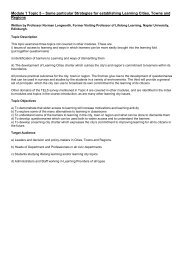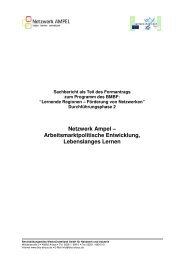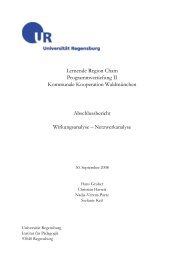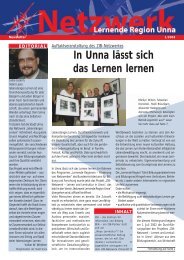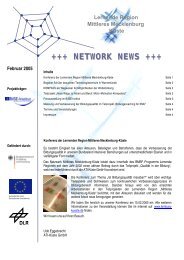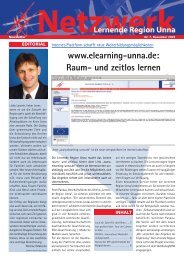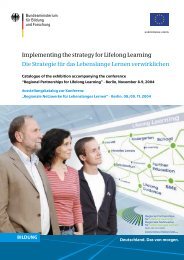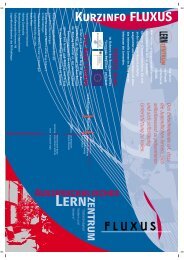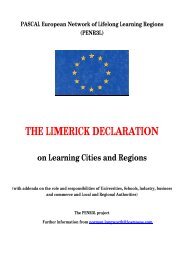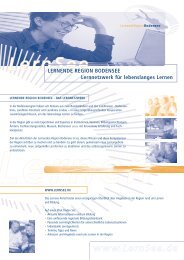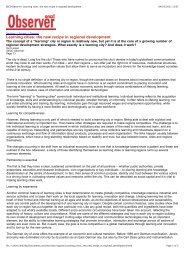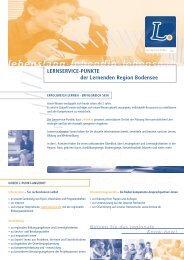SWOT-analysis as a basis for regional strategies - EUROlocal
SWOT-analysis as a basis for regional strategies - EUROlocal
SWOT-analysis as a basis for regional strategies - EUROlocal
You also want an ePaper? Increase the reach of your titles
YUMPU automatically turns print PDFs into web optimized ePapers that Google loves.
KVARKEN-MITTSKANDIA<br />
INTERRERG III A<br />
BALTIC<br />
INTERREG III B<br />
DENMARK OBJECTIVE 2<br />
VESTFOLD<br />
REGIONAL DEVELOPMENT<br />
PROGRAMME<br />
(NORWAY)<br />
SØR-TRØNDELAG<br />
REGIONAL DEVELOPMENT<br />
PROGRAMME (NORWAY)<br />
1. Infr<strong>as</strong>tructure and transport<br />
2. Expertise and markets<br />
3. Shared values<br />
1. Promotion of balanced territorial structures,<br />
supporting sustainable development<br />
2. Institution building and co-operation<br />
between <strong>regional</strong> and local authorities<br />
1. Regional development, prerequisites <strong>for</strong><br />
economic development<br />
2. Development of SMEs<br />
3. Development of human resources and<br />
competence<br />
4. Investments to in<strong>for</strong>mation and technical<br />
<strong>as</strong>sistance<br />
1. Welfare and values<br />
2. Territorial administration<br />
3. Sustainable energy<br />
4. Competence development<br />
5. Employment<br />
1. Quality of life<br />
2. Working life<br />
3. Land use and physical infr<strong>as</strong>tructure<br />
4. Regional development and co-operation<br />
1.1.1 Swedish Regional Growth Agreements (’tillväxtavtal’)<br />
The aim of the Regional Growth Agreements is to promote growth and employment<br />
in the Swedish Counties. Agreements are the result of a governmental bill, “Regional<br />
Growth – <strong>for</strong> Employment and Welfare” (1997/98: 62) p<strong>as</strong>sed in spring 1998. The bill<br />
outlined a proposal <strong>for</strong> <strong>regional</strong> industrial policy, which could be adapted to local<br />
conditions, integrating various actors from different sectors in the <strong>regional</strong> society in<br />
the <strong>for</strong>m of <strong>regional</strong> partnerships. The partnership is to begin at the planning stage and<br />
extend over the whole process cycle to include financing and implementation. The<br />
idea w<strong>as</strong> that “on the b<strong>as</strong>is of the unique features of each region, sustainable<br />
economic growth should be stimulated which will contribute to more expansive<br />
enterprises and to an incre<strong>as</strong>ed in employment” (ibid.). (See also: Nordregio,<br />
Ledningskonsulterna, SIR, 2000)<br />
The novelty of the Growth Agreements lies largely in the strongly emph<strong>as</strong>ised<br />
partnership approach, including incre<strong>as</strong>ed connections between private and public<br />
sector organisations. This novelty h<strong>as</strong> been viewed positively in the counties<br />
implementing the agreements, though certain fears have been expressed that the actual<br />
undertaking of the concrete me<strong>as</strong>ures, which is more traditionally divided between<br />
various sectors will result in a traditionally organised, rather fragmentary field of<br />
actors. (Promemoria, 2000-07-24).<br />
The actors involved in the preparation of the programme represent a wide variety of<br />
interests, from County level and municipal administration to local educational<br />
institutions, trade unions, chambers of commerce and other social and economic<br />
organisations across the region. The partnership principle w<strong>as</strong> thus taken seriously,<br />
with each of the approximately 40 different institutional representatives signing the<br />
11



